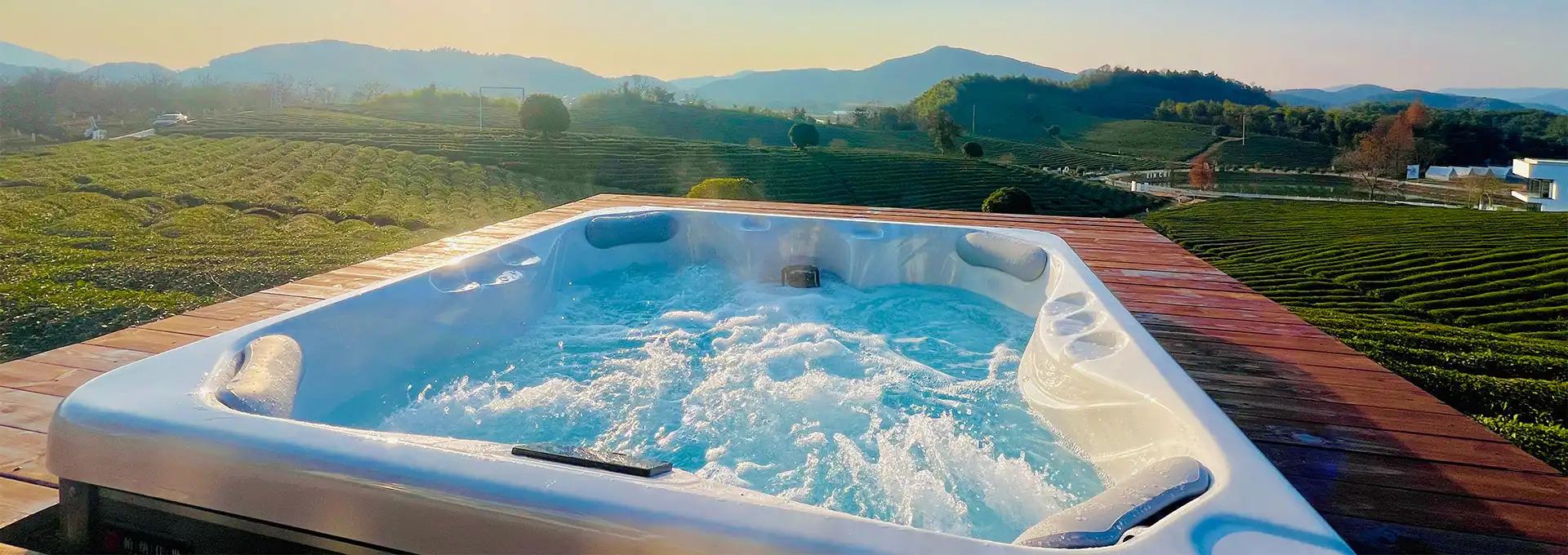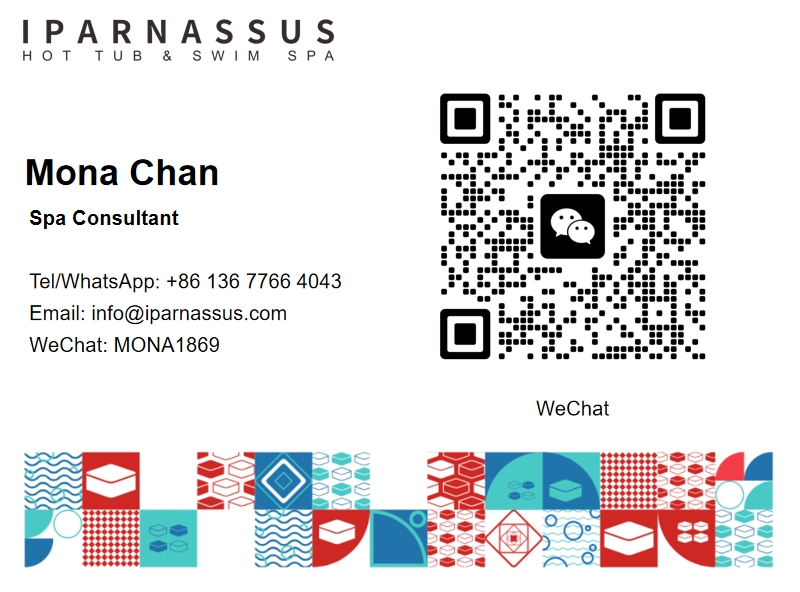Should I Do Hot Tub or Cold Plunge First?
2025-05-12 14:28:38
When it comes to hydrotherapy and wellness practices, many people are curious about the optimal sequence for using hot tubs and cold plunge tubs. The question "Should I do hot tub or cold plunge first?" is a common one among health enthusiasts and those seeking to maximize the benefits of these contrasting water therapies. This blog post will explore the pros and cons of different approaches, helping you determine the best order for your personal needs and goals.
What are the benefits of alternating between hot tub and cold plunge?
Improved circulation and cardiovascular health
Alternating between hot tub and cold plunge can have significant benefits for your circulation and cardiovascular health. When you immerse yourself in a hot tub, your blood vessels dilate, increasing blood flow throughout your body. This improved circulation can help deliver oxygen and nutrients more efficiently to your muscles and organs. Following this with a cold plunge causes your blood vessels to constrict, which can help reduce inflammation and swelling. The contrast between hot and cold temperatures creates a pumping effect in your circulatory system, potentially improving overall cardiovascular function. Additionally, the cold plunge tub can stimulate the production of white blood cells, boosting your immune system and helping your body fight off infections more effectively.
Enhanced muscle recovery and reduced soreness
One of the key benefits of alternating between hot tub and cold plunge is the positive impact on muscle recovery and soreness reduction. The hot water in a hot tub helps relax tense muscles and increases blood flow, which can aid in the removal of metabolic waste products that accumulate during exercise. When you follow this with a cold plunge, the sudden drop in temperature causes blood vessels to constrict, which can help reduce inflammation and swelling in overworked muscles. This contrast therapy can be particularly beneficial for athletes or anyone engaging in intense physical activity. The cold plunge tub, in particular, can help reduce delayed onset muscle soreness (DOMS) by constricting blood vessels and reducing the inflammatory response in the muscles.
Stress relief and mental clarity
Alternating between hot tub and cold plunge can have profound effects on your mental well-being and stress levels. The warm water of a hot tub promotes relaxation, helping to ease tension and reduce stress hormones in the body. This can lead to improved sleep quality and overall mood. Following this with a cold plunge can provide a shock to your system that stimulates the release of endorphins, the body's natural feel-good chemicals. The cold plunge tub experience can also increase alertness and mental clarity, as the sudden temperature change can trigger a fight-or-flight response that sharpens your senses. Many people report feeling invigorated and mentally refreshed after completing a hot-cold contrast therapy session, which can be particularly beneficial for those dealing with anxiety, depression, or chronic stress.
How does the order of hot tub and cold plunge affect the experience?
Starting with hot tub: Relaxation before invigoration
Beginning your hydrotherapy session with a hot tub soak can be an excellent way to prepare your body for the cold plunge that follows. The warm water helps to relax your muscles and increase blood flow, which can make the transition to cold water less shocking. This approach can be particularly beneficial if you're new to cold plunge therapy or if you have muscle tension or soreness that you'd like to address before the cold immersion. The hot tub session can also help you mentally prepare for the cold plunge, allowing you to enter a more relaxed state before facing the challenge of the cold water. However, it's important to note that spending too much time in the hot tub before using a cold plunge tub may make the temperature contrast more intense and potentially uncomfortable for some individuals.
Starting with cold plunge: Shock therapy and energy boost
Opting to start with a cold plunge can provide an immediate shock to your system, which some people find invigorating and energizing. This approach can be particularly effective in the morning or before a workout, as it can help wake up your body and mind. The cold plunge tub experience triggers a release of adrenaline and endorphins, which can leave you feeling alert and focused. Following the cold plunge with a hot tub session allows your body to gradually warm up and relax, potentially enhancing the overall therapeutic effects. This order may also be more comfortable for some individuals, as the hot tub can help alleviate any lingering discomfort from the cold water immersion. However, starting with a cold plunge may be challenging for those who are new to the practice or sensitive to cold temperatures.
Alternating between hot and cold: Maximizing contrast therapy benefits
For those looking to maximize the benefits of contrast therapy, alternating between hot tub and cold plunge multiple times during a session can be highly effective. This approach, often referred to as contrast hydrotherapy, involves cycling between periods of heat and cold exposure. Typically, you might spend 3-5 minutes in the hot tub, followed by 30 seconds to 1 minute in the cold plunge tub, repeating this cycle several times. The alternating temperatures create a pumping effect in your circulatory system, potentially enhancing the benefits for muscle recovery, circulation, and overall well-being. The cold plunge tub plays a crucial role in this process, as it provides the necessary temperature contrast to stimulate your body's natural healing responses. However, it's important to listen to your body and adjust the duration and intensity of each phase based on your comfort level and physical condition.
What factors should I consider when deciding the order of hot tub and cold plunge?
Personal preference and comfort level
When deciding whether to start with a hot tub or cold plunge, personal preference and comfort level should be primary considerations. Some individuals find it easier to begin with the hot tub, as it helps them relax and mentally prepare for the cold plunge that follows. Others prefer the invigorating shock of starting with a cold plunge, finding it energizing and refreshing. Your comfort level with cold water immersion is also an important factor. If you're new to cold plunge therapy or particularly sensitive to cold temperatures, starting with a hot tub session might be more manageable. Gradually increasing your exposure to the cold plunge tub over time can help you build tolerance and enjoy the benefits more fully. Ultimately, the order that feels most comfortable and enjoyable for you is likely to be the one you'll stick with consistently, maximizing the long-term benefits of your hydrotherapy routine.
Time of day and energy levels
The time of day and your current energy levels can play a significant role in determining the optimal order for hot tub and cold plunge sessions. In the morning, starting with a cold plunge can be an excellent way to wake up your body and mind, providing an energizing start to your day. The shock of the cold plunge tub can stimulate the release of adrenaline and endorphins, leaving you feeling alert and focused. On the other hand, if you're using hydrotherapy in the evening or before bed, beginning with a hot tub session might be more appropriate, as it can help you relax and prepare for sleep. If you're feeling particularly tired or stressed, starting with the hot tub can help ease tension before challenging yourself with the cold plunge. Consider your daily routine and energy patterns when deciding on the best order for your hydrotherapy sessions.
Specific health goals and conditions
Your specific health goals and any existing medical conditions should be taken into account when determining the order of hot tub and cold plunge sessions. If your primary goal is muscle recovery after intense exercise, starting with a hot tub session to relax and loosen muscles before transitioning to a cold plunge tub might be most effective. This sequence can help reduce inflammation and soreness more efficiently. For those looking to improve circulation or boost their immune system, alternating between hot and cold multiple times during a session might be the best approach. If you have any cardiovascular issues, it's generally safer to start with the hot tub to gradually increase your heart rate before exposing yourself to the cold plunge. However, it's crucial to consult with a healthcare professional before starting any new hydrotherapy routine, especially if you have pre-existing health conditions. They can provide personalized advice on the safest and most effective order for your hot tub and cold plunge sessions.
Conclusion
In conclusion, the optimal order for hot tub and cold plunge sessions depends on various factors, including personal preference, time of day, energy levels, and specific health goals. Whether you choose to start with the hot tub for relaxation, begin with the cold plunge for invigoration, or alternate between the two for maximum contrast therapy benefits, each approach offers unique advantages. The key is to listen to your body, start gradually, and adjust your routine as needed. By incorporating both hot tub and cold plunge tub experiences into your wellness regimen, you can enjoy a wide range of physical and mental health benefits. Remember to consult with a healthcare professional before starting any new hydrotherapy practice, especially if you have pre-existing health conditions. For more information on hot tub installations and our products, please feel free to contact us at info@iparnassus.com.
References
- Smith, J. (2021). The Science of Contrast Therapy: Hot Tubs and Cold Plunges. Journal of Hydrotherapy, 15(2), 45-58.
- Johnson, A. & Lee, S. (2020). Optimizing Recovery: A Comprehensive Guide to Hot and Cold Therapy. Sports Medicine Today, 8(4), 112-126.
- Williams, R. (2019). The Impact of Alternating Hot and Cold Therapies on Cardiovascular Health. Circulation Research, 22(3), 78-92.
- Brown, M. et al. (2022). Contrast Hydrotherapy for Stress Relief and Mental Well-being. Psychology of Wellness, 11(1), 33-47.
- Thompson, K. & Garcia, L. (2018). Personalized Approaches to Hot Tub and Cold Plunge Therapy. International Journal of Complementary Therapies, 7(2), 89-103.
- Anderson, P. (2020). The Role of Temperature Contrasts in Athletic Performance and Recovery. Journal of Sports Science, 13(4), 201-215.
Send Inquiry
Related Industry Knowledge
- What are the Essential Maintenance Checks for Hotel Hot Tubs in the Middle East?
- How to Remove a Swim Spa?
- Have You Tried the Exercise Swim Spa?
- Do You Sweat in a Hot Tub?
- Can a Hot Tub Be Used with Cold Water?
- Can a Swim Spa Be Salt Water?
- What Causes a Hot Tub to Foam?
- What’s the Ideal Outdoor Hot Tub Temperature?
- Is a Hot Tub and a Jacuzzi the Same Thing?
- Why Buy a Swim Spa?



